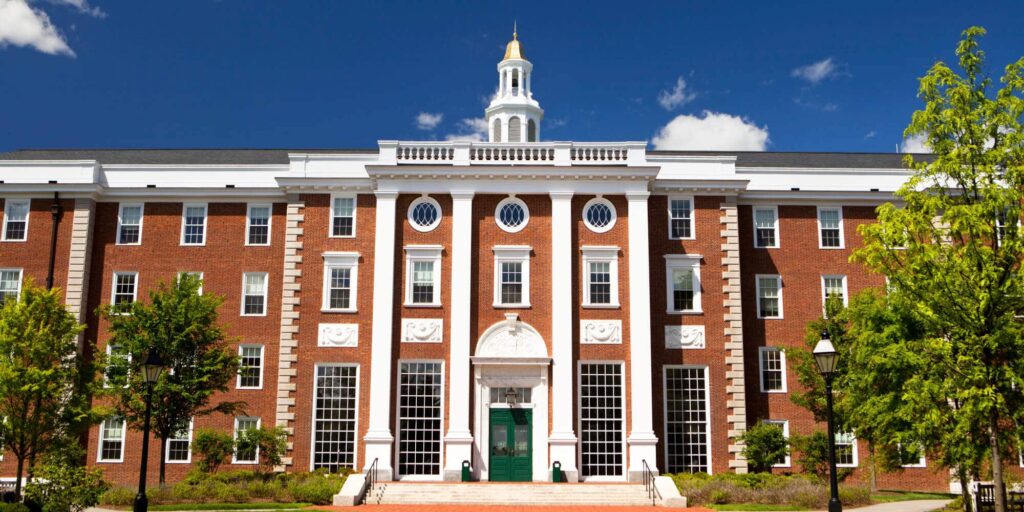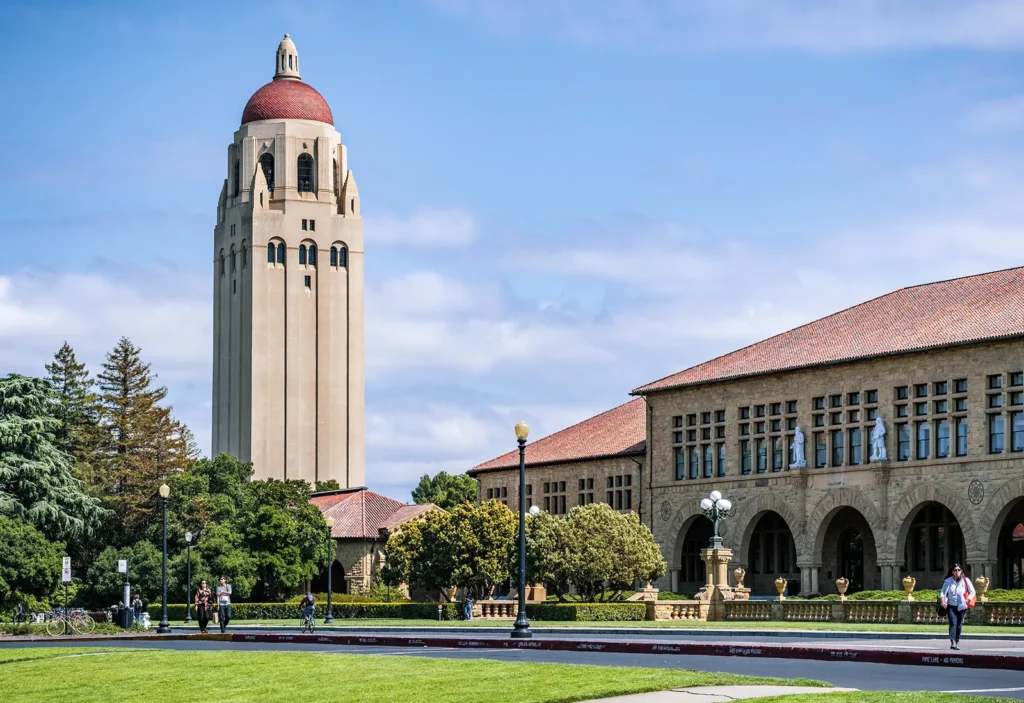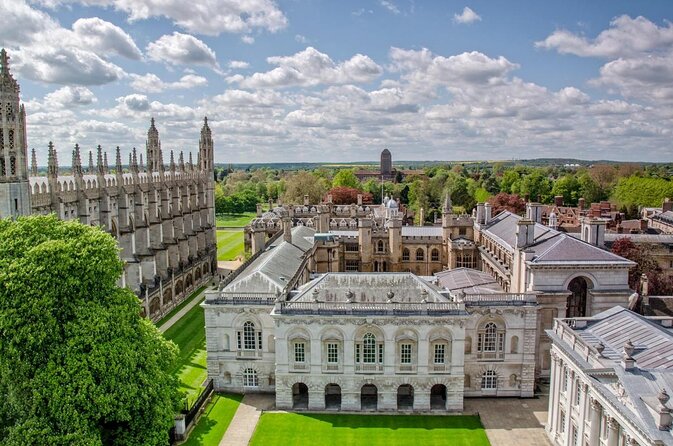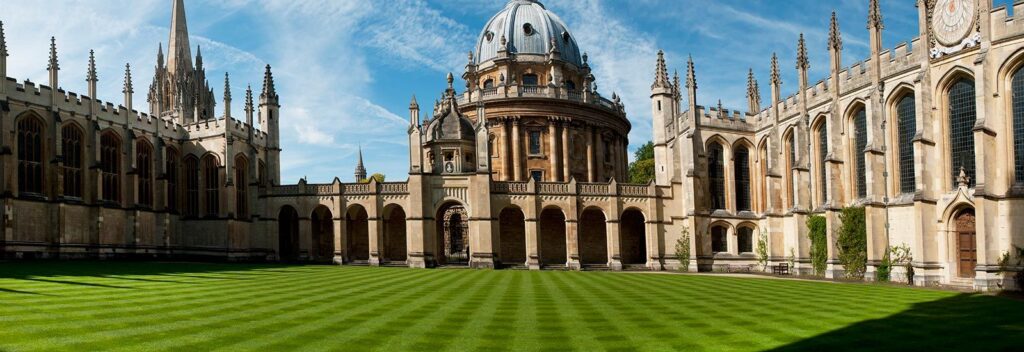A Brief History of Harvard[Best Universities in the World]
Founded by the Massachusetts Bay Colony, Harvard was initially named “New College.” In 1639, it was renamed after its first benefactor, John Harvard, who donated his library and half of his estate. From its humble beginnings with just nine students and a single instructor, Harvard has grown into a global academic powerhouse.
Over the centuries, Harvard has played a pivotal role in shaping education and culture in America. It has been the alma mater of eight U.S. presidents, countless Nobel laureates, and influential figures in science, arts, and politics.
Academic Programs and Schools
Harvard comprises 13 degree-granting schools, each offering a wide array of programs. Its undergraduate division, Harvard College, provides more than 50 concentrations ranging from humanities to natural sciences. Notable graduate schools include:
- Harvard Business School (HBS): Known for pioneering the case study method.
- Harvard Law School (HLS): One of the world’s premier legal institutions.
- Harvard Medical School (HMS): Renowned for medical research and education.
- Harvard Kennedy School: Focused on public policy and leadership.
The university emphasizes interdisciplinary studies, encouraging students to engage across fields.

World-Class Campus and Facilities
Harvard’s campus, situated along the Charles River, blends historical architecture with modern facilities. Landmarks include:
- Widener Library: One of the largest academic libraries globally.
- Memorial Hall: A stunning example of High Victorian Gothic architecture.(Best Universities in the World)
- Harvard Yard: The heart of the campus, home to freshman dormitories and iconic buildings.
State-of-the-art research centers like the Wyss Institute for Biologically Inspired Engineering contribute to groundbreaking discoveries.
Research and Innovation
Harvard is a leader in research, receiving billions in funding annually. Its faculty and students work on cutting-edge projects in areas like:
- Artificial intelligence and robotics.
- Climate change and sustainability.
- Genomics and public health.
Collaborative ventures with institutions like MIT further enhance its research capabilities.
Student Life and Diversity
Harvard’s vibrant student community includes over 20,000 students from more than 150 countries. The university prioritizes inclusivity, offering robust financial aid programs to ensure access for students from all backgrounds. Clubs, organizations, and extracurricular activities—ranging from debate to theater—enrich the student experience.
Notable Alumni and Legacy
Harvard boasts a remarkable list of alumni who have shaped the world, including:
- Barack Obama: Former U.S. President.
- Mark Zuckerberg: Founder of Facebook.
- Ruth Bader Ginsburg: Iconic Supreme Court Justice.
This legacy underscores the university’s impact on global leadership, innovation, and culture.
Conclusion
Harvard University remains a beacon of knowledge and opportunity. With its deep-rooted traditions, cutting-edge research, and commitment to shaping future leaders, Harvard continues to define excellence in education.
2-Stanford University
Stanford University, officially known as Leland Stanford Junior University, was established in 1885. Nestled in the heart of Silicon Valley, California, it is one of the world’s leading institutions for research, innovation, and education. Stanford is synonymous with groundbreaking discoveries, entrepreneurial spirit, and academic achievement.
A Brief History of Stanford
Stanford University was founded by railroad magnate and former California Governor Leland Stanford and his wife, Jane Stanford, in memory of their only son, Leland Stanford Jr., who passed away at the age of 15. Their vision was to establish an institution that would “promote the public welfare by exercising an influence on behalf of humanity and civilization.”
Stanford officially opened its doors in 1891, with an initial enrollment of 555 students. Over time, it has grown into one of the most prestigious universities in the world, shaping industries and inspiring global change.

Academic Programs and Schools
Stanford is organized into seven schools offering a broad spectrum of programs:
- School of Humanities and Sciences: Offers courses in arts, social sciences, and natural sciences.
- School of Engineering: Renowned for innovations in artificial intelligence, bioengineering, and computer science.
- School of Medicine: Focuses on cutting-edge research and healthcare solutions.
- Graduate School of Business (GSB): Among the top-ranked business schools globally.
- Stanford Law School: Prepares leaders in law and policy.
- School of Earth, Energy & Environmental Sciences: Tackles critical challenges in sustainability.
- School of Education: Focuses on improving education systems worldwide.
The university encourages interdisciplinary studies, providing students with unparalleled opportunities to explore diverse fields.
Campus and Facilities
Spanning over 8,000 acres, Stanford’s campus is among the largest in the United States. Key landmarks include:
- Hoover Tower: A symbol of Stanford and a hub for research.
- Memorial Church: A stunning architectural masterpiece.
- Stanford Linear Accelerator Center (SLAC): A leader in particle physics research.
- Cantor Arts Center: Showcasing world-class art collections.
The campus also boasts state-of-the-art libraries, labs, and recreational facilities.
Innovation and Entrepreneurship
Stanford’s location in Silicon Valley has made it a cradle for innovation. It has played a pivotal role in the growth of the tech industry, with alumni founding companies like:
- Hewlett-Packard (HP)
- Cisco
The university fosters entrepreneurial spirit through programs like the Stanford Technology Ventures Program and its renowned startup ecosystem.
Research Excellence
Stanford invests heavily in research, with a focus on solving global challenges. Key areas of research include:
- Artificial intelligence and machine learning.
- Climate change and renewable energy.
- Biomedical sciences and personalized medicine.
- Social sciences and public policy.
Collaborations with industry leaders and government organizations amplify its research impact.
Student Life and Diversity
Stanford is home to more than 16,000 students from over 90 countries. The university is committed to inclusivity, offering need-blind admissions and extensive financial aid programs. Student life is vibrant, with over 650 organizations, athletic teams, and cultural clubs.
Stanford’s residential community fosters close connections, with more than 90% of undergraduates living on campus.
Notable Alumni and Global Impact
Stanford’s alumni network is a testament to its influence, with leaders in every field, including:
- Elon Musk: CEO of Tesla and SpaceX.
- Sundar Pichai: CEO of Alphabet Inc. (Google’s parent company).
- Reed Hastings: Co-founder of Netflix.
- Condoleezza Rice: Former U.S. Secretary of State.
Stanford graduates continue to shape industries, politics, and culture worldwide.
Conclusion
Stanford University embodies the pursuit of excellence and innovation. With its rich history, cutting-edge research, and entrepreneurial focus, Stanford remains at the forefront of global education and progress.
3-University of Cambridge
The University of Cambridge, established in 1209, is one of the world’s oldest and most prestigious universities. Located in the historic city of Cambridge, England, it is celebrated for its academic rigor, innovative research, and influential alumni. Cambridge has shaped global knowledge and culture for over eight centuries.
A Brief History of Cambridge
The University of Cambridge was founded by scholars fleeing political unrest at the University of Oxford. By 1231, it had received royal recognition and began evolving into a distinguished institution. Its collegiate system, which includes 31 autonomous colleges, was introduced over time, fostering a unique and intimate educational experience.
Cambridge has been a trailblazer in science, literature, and philosophy. The university has produced 121 Nobel laureates, more than any other institution globally, and its contributions to knowledge span multiple disciplines.

Academic Excellence and Colleges
Cambridge operates through its 31 colleges, each an independent institution that provides accommodation, pastoral care, and smaller-scale teaching. These colleges are complemented by six academic schools:
- Arts and Humanities
- Biological Sciences
- Clinical Medicine
- Humanities and Social Sciences
- Physical Sciences
- Technology
Each school oversees teaching and research across various departments. Cambridge’s renowned tutorial system emphasizes personalized learning, allowing students to engage directly with world-class faculty.
Campus and Historic Architecture
The University of Cambridge is renowned for its picturesque campus, blending historic and modern architecture. Iconic landmarks include:
- King’s College Chapel: A masterpiece of Gothic architecture and a symbol of Cambridge.
- The Cambridge University Library: Home to over 8 million volumes, it is one of the largest legal deposit libraries in the UK.
- The Mathematical Bridge: A fascinating wooden bridge that defies conventional engineering concepts.
The university’s serene setting along the River Cam adds to its charm, attracting visitors and scholars alike.
Research and Innovation
Cambridge is a global leader in research, with a focus on addressing critical challenges in science, medicine, and technology. Notable contributions include:
- The discovery of the structure of DNA by James Watson and Francis Crick.
- Breakthroughs in quantum mechanics and astrophysics.
- Advancements in renewable energy and sustainable practices.
The university collaborates with industry leaders through initiatives like the Cambridge Innovation Center, fostering startups and technological advancements.
Student Life and Diversity
Cambridge hosts around 24,000 students from over 140 countries, making it a vibrant and diverse community. The university offers extensive financial aid to ensure accessibility for students of all backgrounds. Extracurricular activities, including rowing, drama, and academic societies, play a significant role in student life.
Collegiate traditions such as formal dinners, May Balls, and the annual boat race against Oxford enhance the Cambridge experience.
Notable Alumni and Global Impact
The University of Cambridge has an unparalleled alumni network, including:
- Sir Isaac Newton: Pioneer of classical physics and mathematics.
- Charles Darwin: Father of evolutionary biology.
- Alan Turing: Mathematician and father of modern computing.
- Emma Thompson: Acclaimed actress and writer.
These individuals and many more have left indelible marks on science, literature, politics, and the arts.
Conclusion
The University of Cambridge stands as a beacon of academic excellence and innovation. Its rich history, global influence, and commitment to advancing knowledge make it a cornerstone of higher education worldwide. With its deep traditions and forward-looking vision, Cambridge continues to inspire generations of scholars and leaders.
4. University of Oxford
The University of Oxford, founded in 1096, is the oldest university in the English-speaking world. Located in Oxford, England, it is an iconic symbol of academic excellence and intellectual achievement. Known for its unique collegiate system, Oxford has shaped the minds of countless global leaders, scholars, and innovators.
A Brief History of Oxford
Oxford’s origins date back to the late 11th century, with teaching in various disciplines flourishing by the 12th century. By 1167, the university gained prominence after English students were banned from attending the University of Paris. In 1249, the collegiate system was introduced, starting with the establishment of University College.
Over its long history, Oxford has been at the forefront of education and research, influencing global thought and culture. Its enduring legacy is reflected in the achievements of its alumni and the groundbreaking discoveries it has fostered.

Academic Structure and Colleges
Oxford comprises 39 colleges and six permanent private halls, each functioning as an independent institution under the university’s umbrella. These colleges offer small-group tutorials and foster tight-knit communities for learning and personal development.
The university has four academic divisions:
- Humanities
- Mathematical, Physical, and Life Sciences
- Medical Sciences
- Social Sciences
Oxford is particularly known for its humanities programs, including philosophy, literature, and history, alongside pioneering research in science and medicine.
Campus and Architectural Heritage
Oxford’s campus is a blend of historic and modern architecture, set amidst a bustling medieval town. Key landmarks include:
- Radcliffe Camera: A stunning circular library at the heart of the university.
- Bodleian Library: One of the oldest libraries in Europe, holding over 13 million printed items.
- Christ Church College: Famous for its dining hall, which inspired the Great Hall in the Harry Potter films.
- Sheldonian Theatre: Designed by Christopher Wren, it is a venue for university ceremonies.
The River Thames and River Cherwell add to Oxford’s charm, with rowing being a popular student activity.
Research and Innovation
Oxford is renowned for its cutting-edge research, addressing critical global challenges. Key contributions include:
- The development of the Oxford-AstraZeneca COVID-19 vaccine.
- Advances in artificial intelligence and quantum computing.
- Pioneering work in environmental sustainability and renewable energy.
The university receives substantial research funding and collaborates with leading institutions and industries worldwide.
Student Life and Community
Oxford’s vibrant student community includes over 24,000 students from more than 150 countries. The university is committed to inclusivity, offering generous financial aid and scholarships.
Extracurricular life thrives with over 400 clubs and societies catering to various interests, including sports, arts, and academics. The annual Oxford-Cambridge Boat Race is one of the most celebrated traditions.
Notable Alumni and Global Influence
Oxford’s alumni network includes some of the most influential figures in history, such as:
- Sir Stephen Hawking: Renowned theoretical physicist.
- Margaret Thatcher: Former UK Prime Minister.
- Malala Yousafzai: Nobel Peace Prize laureate.
- Oscar Wilde: Acclaimed writer and poet.
These individuals exemplify Oxford’s tradition of nurturing leaders and visionaries.
Traditions and Ceremonies
Oxford is steeped in traditions, from formal dinners in college dining halls to matriculation and graduation ceremonies. Events like Encaenia, the annual commemoration of benefactors, highlight the university’s rich heritage.
Conclusion
The University of Oxford is a timeless institution that embodies excellence, tradition, and innovation. With its unparalleled history, global impact, and commitment to academic rigor, Oxford continues to inspire generations of scholars and leaders, shaping the world’s future.
5. Massachusetts Institute of Technology (MIT)
The Massachusetts Institute of Technology (MIT), founded in 1861, is one of the world’s foremost institutions for science, technology, and innovation. Located in Cambridge, Massachusetts, it has redefined the boundaries of knowledge, fostering creativity, research, and entrepreneurship to solve global challenges.
A Brief History of MIT
MIT was established during the Industrial Revolution to address the growing need for advanced technical education in the United States. Its founder, William Barton Rogers, envisioned a “new polytechnic school” to bridge theoretical and applied sciences.
The institute opened in 1865 with just 15 students, but over time, it expanded into a global powerhouse. During World War II, MIT played a pivotal role in technological advancements, including radar and computing systems, cementing its legacy as a leader in research and development.

Academic Excellence and Schools
MIT is organized into five schools and one college, offering interdisciplinary education and research opportunities:
- School of Engineering: Renowned for programs in aerospace, electrical, and mechanical engineering.
- School of Science: Focuses on disciplines like physics, biology, and chemistry.
- School of Architecture and Planning: Pioneering urban design and sustainable architecture.
- MIT Sloan School of Management: Among the top business schools worldwide.
- School of Humanities, Arts, and Social Sciences: Balances technological education with cultural studies.
- Schwarzman College of Computing: A leader in artificial intelligence and machine learning.
MIT’s emphasis on problem-solving and innovation ensures that students receive a world-class education tailored to real-world challenges.
Campus and Facilities
MIT’s campus spans 168 acres along the Charles River, offering a mix of modern and historic buildings. Key landmarks include:
- The Great Dome: An iconic architectural feature and hub of academic life.
- MIT Media Lab: A pioneer in interdisciplinary research and innovation.
- Stata Center: A striking building designed by Frank Gehry, home to computer science and AI research.
- Kendall Square: Known as the “most innovative square mile on Earth,” it houses numerous startups and tech companies.
MIT’s campus fosters collaboration and creativity, with cutting-edge labs, libraries, and maker spaces for students and researchers.
Research and Innovation
MIT is synonymous with innovation and is home to groundbreaking research across disciplines. Major contributions include:
- Development of artificial intelligence and robotics.
- Breakthroughs in clean energy, including solar cells and wind turbine technology.
- Advancements in biotechnology and personalized medicine.
- Contributions to space exploration through collaborations with NASA.
The institute receives billions in research funding and partners with global organizations to address pressing issues like climate change, healthcare, and cybersecurity.
Student Life and Diversity
MIT has a vibrant and diverse student community of over 11,000 students from nearly every country. The institute emphasizes inclusivity and offers generous financial aid to ensure access for students from all socioeconomic backgrounds.
Student life is enriched by over 500 clubs and organizations, ranging from robotics teams to cultural groups. Unique traditions, like the annual “Hacking” culture of inventive pranks, add to the MIT experience.
Entrepreneurial Spirit and Startups
Entrepreneurship is deeply ingrained in MIT’s culture. Alumni and faculty have founded countless successful companies, including:
- Intel
- Dropbox
- Bose Corporation
- HubSpot
MIT’s startup ecosystem is bolstered by initiatives like the Martin Trust Center for MIT Entrepreneurship, making it a hub for innovation and business development.
Notable Alumni and Global Influence
MIT’s alumni include some of the most influential figures in science, technology, and business, such as:
- Kofi Annan: Former UN Secretary-General.
- Buzz Aldrin: Apollo 11 astronaut.
- I.M. Pei: Renowned architect.
- Elon Musk: Founder of SpaceX and Tesla.
These individuals reflect MIT’s tradition of producing leaders who shape industries and drive global progress.
MIT’s Global Impact
MIT’s impact extends far beyond its campus. The institute collaborates with governments, nonprofits, and industries to address global challenges. Its research and innovation have transformed sectors like transportation, healthcare, and energy.
Conclusion
The Massachusetts Institute of Technology stands as a beacon of innovation, creativity, and excellence. With its unwavering commitment to advancing knowledge and solving global problems, MIT continues to shape the future of technology, science, and society.
